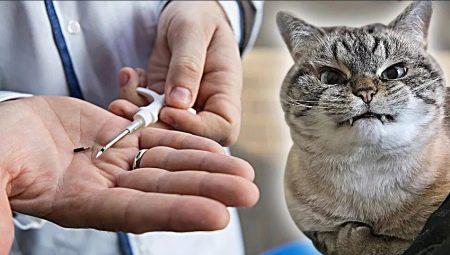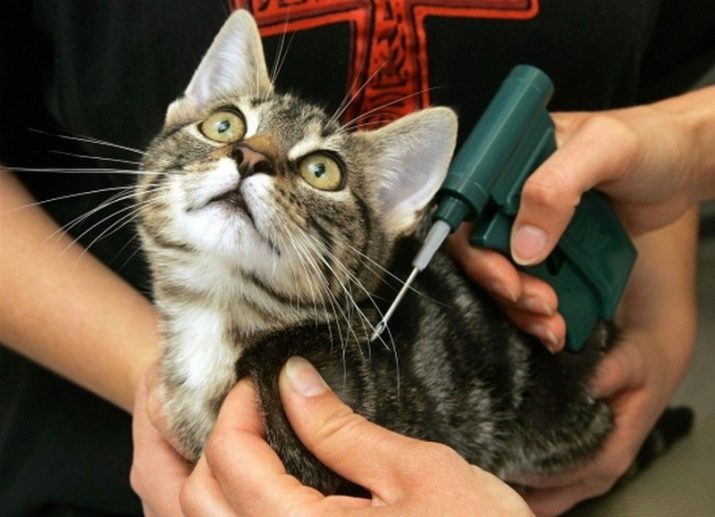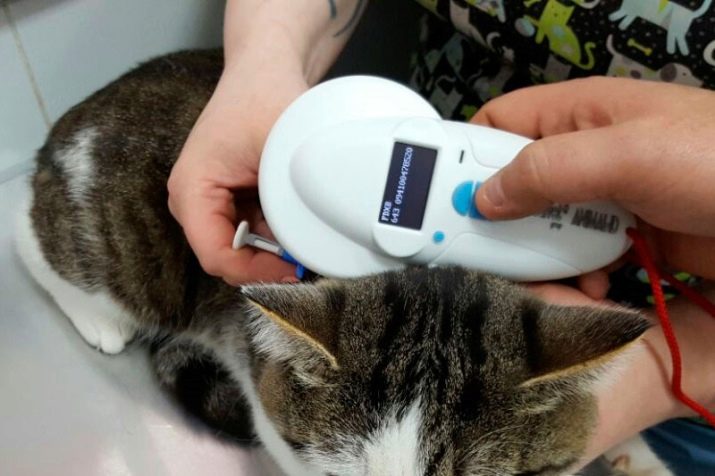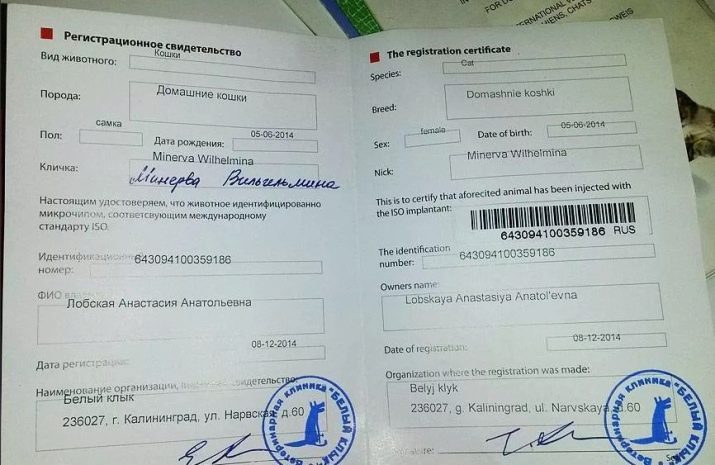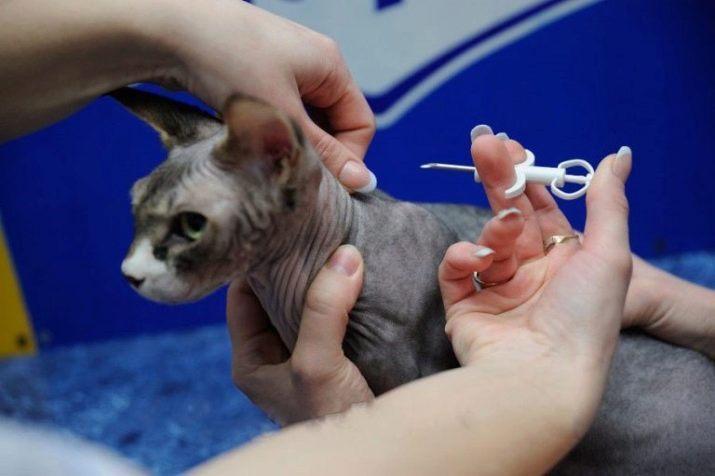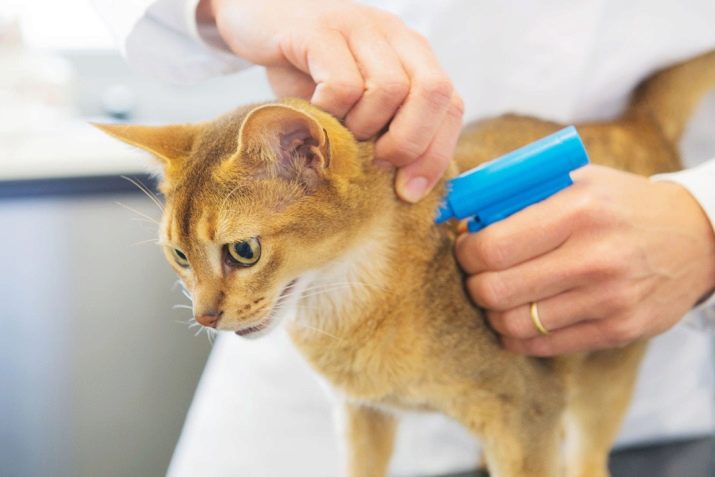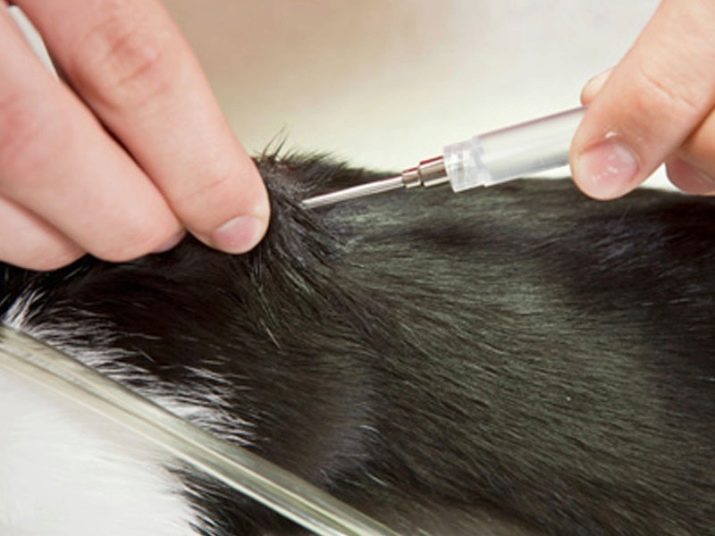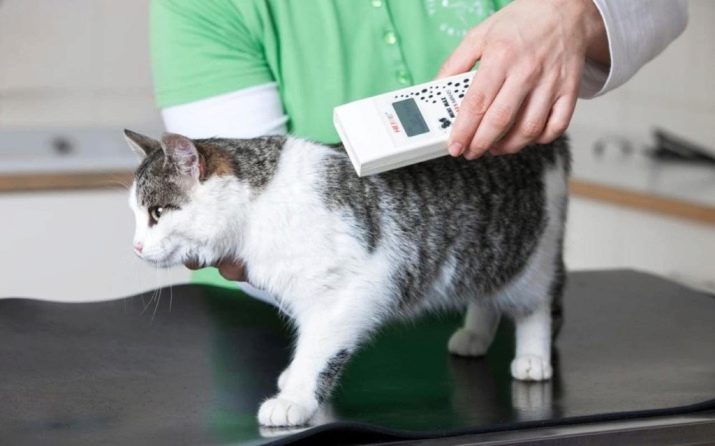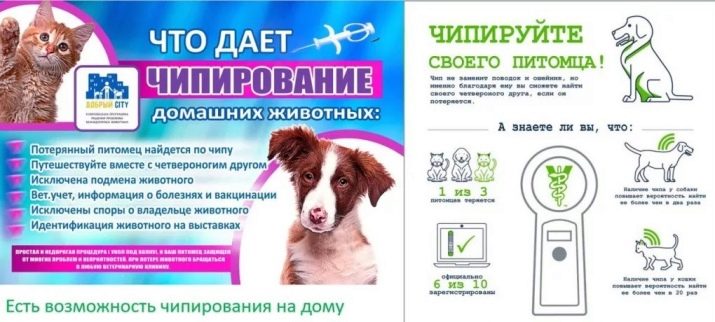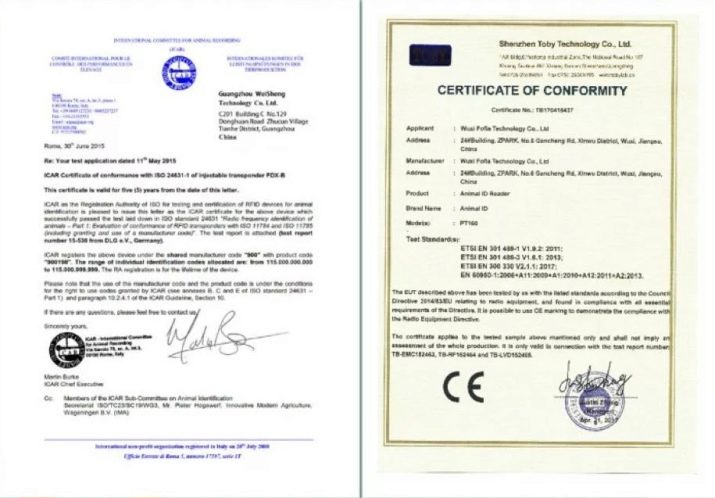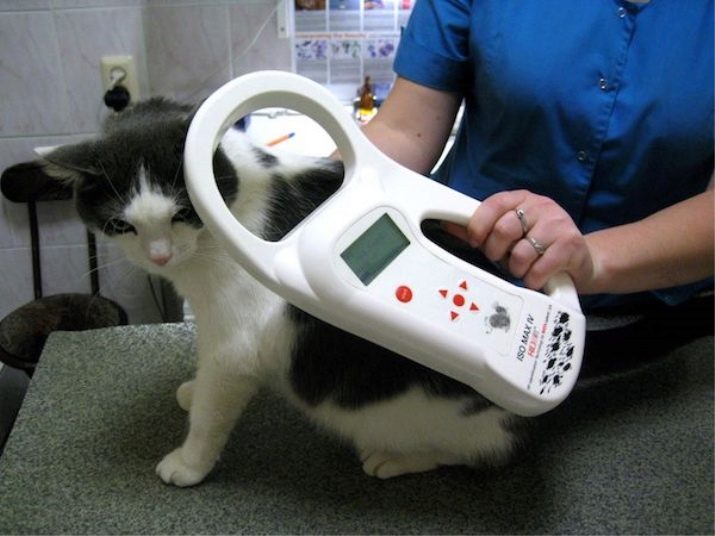In the age of urbanization, people do not have much opportunity and time to go on nature and communicate with animals. Therefore, the maintenance of pets (cats, dogs, hamsters) for the modern man is increasingly becoming the only affordable alternative to life in rural areas. Considerations of safety and convenience of the owner require at the same time to chip each animal.
What is chipping?
Electronic identification of animals is called chipping. This procedure is implanting a small electronic circuit with personal data under the skin of a cat. Information on it is presented in the form of a code that is unique and consists of 15 digits. Decoding of this designation, including information about the owner and his animal, is entered into a special electronic database.
This allows one hundred percent confidence to distinguish the animal from the other relatives.
In the database, in addition to the animal belonging to a specific owner, indicate:
- breed;
- sexual identity;
- nickname;
- date of birth;
- color;
- personal distinctive signs;
- past illnesses;
- vaccinations;
- photo of a pet.
The structure of the code is not accidental, but strictly verified. The first three digits constitute the symbol of the state. They are always separated from the three-digit designation of the manufacturer by zero. And only after that go eight digits inextricably. They designate just this particular animal, allowing it to be accurately identified.
After the procedure, the owner has a passport with all the data, the date of the operation, the name of the veterinary clinic, the signature and stamp of the doctor. Also, all information is entered into the international electronic accounting system in the form of an animal passport. But here you need to understand that not all countries have such advanced technologies. For example, in Russia the introduction of such identification is at the initial stage of development and is carried out mainly by metropolitan clinics. As for foreign countries, there are two main databases: the European Union and the United States.
How is it done?
Chipping an animal looks like a small injection. It runs fast enough. This procedure is considered completely safe and painless; it does not give the animal much inconvenience. To do this, use a syringe-like applicator with a needle through which a microcircuit capsule is inserted.
Before injection, the chip shell is disinfected to eliminate negative health effects.
It is also worth noting that during this procedure, use only disposable syringesthat does not allow the transfer of diseases between animals. In addition, before the introduction of the chip each pet is checked for the presence of various diseases. When they are detected and during the treatment period, chipping is not done. A contraindication is also a weakened immunity of the cat.
The procedure set includes a plastic card similar to that issued by the cans. Chipping is carried out without anesthesia. It is not more painful than vaccination. In any serious veterinary clinic it is performed without any problems. There is even no need to pre-apply.
Since the chip is small, it does not cause discomfort to the pet. Its length can be compared with two rice grains.This device is the best option - the cat or the cat will not lose it. Usually an injection is made at the withers, since there the chip will not move under the skin arbitrarily.
Problems arise only with inaccurate introduction of the chip; because of this, the animal will have to scan longer.
Chip features
There is a common myth that a lost cat can be found by determining the GPS location of the chip. However, the principle of operation of this device is not at all the same as that of a mobile phone, and therefore remote search is impossible. The chip is activated only in one case - when there is a scanning device in the immediate vicinity of it. For the rest of the time, it does not transmit any signals and therefore cannot be tracked.
However, there are several other situations in which chipging is indispensable:
- accounting in a veterinary clinic;
- identification of the owner of the found animal;
- controversial situation (it is unclear which of the apparently similar animals belongs to whom);
- purebred pet insurance;
- travel abroad.
It is necessary to take into account such moments:
- in the CIS countries, a very small number of veterinary clinics are equipped with equipment for reading information from the chip;
- there are low-quality and fake chips;
- With the advent of this device, entry into the territory of some countries with animals without chips is prohibited.
To eliminate possible problems for yourself and for your pet is quite easy. To do this, before starting the procedure, you must ask the doctor for quality certificates on products. Also check the compliance of the chip with international standards. Being interested in this moment is important not only for confidence in the quality of electronics. Inattention to it can turn into problems when traveling abroad.
There are other precautions that minimize the risks when chipping a cat or a cat. It is undesirable to call veterinarians for chipping on the house. Often, such a specialist is not sufficiently competent. In addition, the provision of this service at home can lead to a lack of chip data in the necessary accounting bases. Also, it can turn into a pet infection. In this case, his health will be at risk, and the treatment will cost much more than the money saved at first.
The documents must contain the name of the doctor and his signature.
It is also worth remembering about receiving all documentary evidence on the service provided:
- certificate;
- a plastic card;
- pedigree stickers;
- stickers in the passport.
Modern electronics:
- will help eliminate theft of the animal;
- prevents substitution at exhibitions and other events of this kind;
- serves long enough;
- characterized by high reliability.
Opinion of experts
Veterinarians consider chipping a harmless procedure. If the procedure is performed correctly, then:
- there is no risk of infection (when performing the procedure in the clinic);
- low probability of infection;
- there is no risk of device movement in the body;
- The age of the animal does not matter.
It should be noted that The location of the injection point at the withers is not accidental. This does not allow the cat to reach the injection site. Because she will not be able to infect it when combing. The latest modifications of the chips are equipped with a thermal sensor, the information from which is also displayed on the computer when read. This feature allows the doctor not to waste time on additional temperature measurement.
Chipping cats when going abroad
Before you go on a trip with a pet, you need to know in advance the rules of its transportation across the border. And it is no longer possible to limit ourselves to simply vaccinating the same cat. Veterinary rules of the main states, in addition to the list of vaccinations, also mention the presence of chips. And not just chips, but those that meet certain requirements. You can not enter the EU with a cat without a chip, ISO-11784 compliant.
You also need to pay special attention to the compliance information in the chip and in the passport of the animal. If the data is even slightly different, the error must be corrected before departure. It is worth making a request to the international database on the accounting of animals. There are two main databases of this kind - Petmaxx and EuroPetNet. When all the conditions described above are met, crossing the border will not cause any obstacles.
On whether you need chipping, see below.
